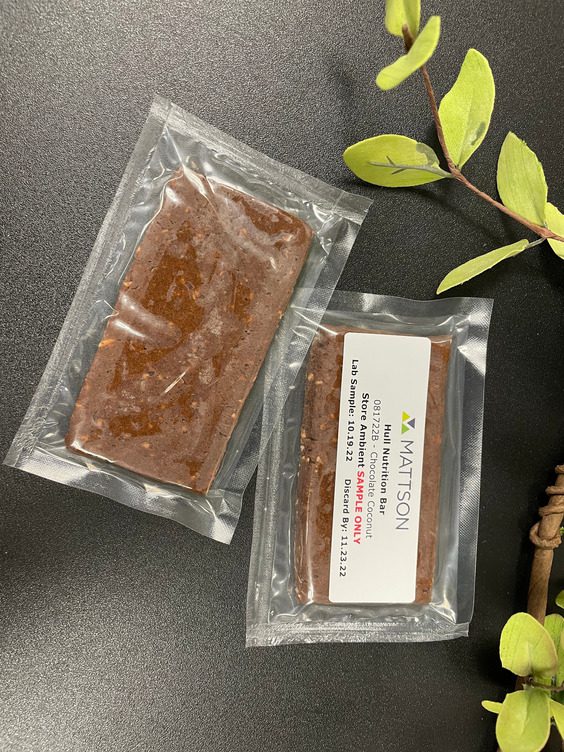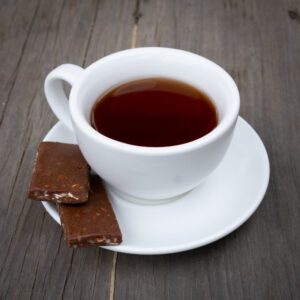
Almond coproducts, the hulls and shells after harvest and the woody biomass from pruning or orchard removals, are finding a higher calling in new food, fiber and energy products.
Nutrition bars, man-made cellulose and single-use plastics including pots for nursery plants are some of the innovative products under development, adding higher value to hulls, shells and chips.
Josette Lewis, chief scientific officer at Almond Board of California, said while the current lower-value streams for almond coproducts including animal feed and bedding require minimal processing for use, higher-value products from coproducts will require higher levels of processing.
Almond Board has been funding research to develop higher-value uses for almond coproducts, but Lewis said they are now moving into the commercial development phase for products, making opportunities more visible to industry and communicating with the investment community.
Commercial development using coproducts depends on reliable sourcing of byproducts on a year-round basis, cost competitiveness with products they would replace, and that any additional processing does not result in unwanted or useless byproducts.
Demand for hulls and shells in innovative new products can significantly increase their value compared to uses in animal feed and soil amendments. An Almond Board-commissioned market assessment showed extraction and torrefaction processes for coproducts result in much higher values than traditional uses.
Extractive products include food-grade almond hull sugar extract syrup, nutraceutical energy bars, soluble and insoluble fiber nutrition products, peat moss replacement for mycelium production and pulp for thermoformed containers. Nanocellulose is another promising product but is still in the research phase.
A third platform for uses lies in torrefaction, or burning to produce high-quality carbon.
Lewis noted progress in efforts to use powdered hulls as an ingredient in nutrition bars. Food development company Mattson has created a bar which Lewis said supplies 5 grams of fiber, is low in carbohydrates and lower in calories than other conventional nutrition bars on the market. While still in the development stage, work is being done to reduce regulatory hurdles with use of powdered hulls and educate food products manufacturers about the benefits of using this almond coproduct.
Replacing Plastic
Paul Kephart, founder of Monterey-based Nutjobs, said the company aims to replace single-use plastics like the black plastic pots used in the nursery industry with materials made from nutshell waste. These plastic substitute products are also compostable.
Working with major manufacturers, consumers are the driving shift toward bioplastics. Kephart said the California agriculture and horticulture industries use 12.5 million tons of plastic every year for plant and animal production. 12% of all solid waste in landfills is plastic.
Kephart said the plastic containers used in nursery production are single use but designed to last for years. Products he is creating with hulls and shells to replace plastic nursery containers include a biodegradable sheet for weed control and preservation of soil moisture, a biodegradable insulated carton for shipping and biodegradable plant containers.
All three products, Kephart said, will lower plastic use and carbon emissions and are compostable. Containers made from nutshell waste meet two important packaging criteria, Kephart said: impact resistance and thermal performance. He has patented the formulations and products to replace single-use plastics and polystyrene. The value of these formulations lies in the ability to integrate them into current manufacturing processes, they are less expensive to produce and come with higher margins than other bioplastics. Kephart also said he has a scalable business model and has secured his first customer.
Products for Consumption and Wear
Back to human consumption products, Switzerland-based RE Nut has developed a processing method to boost yield per pound of raw materials to deliver high fiber, antioxidant, clean label and sugar reduction products.
Roland Laux of Re Nut said the new technology processes in-shell nuts into three valuable nut products: solids, drink and oil. Nut solids can be used in bakery products, foodservice and bakery and chocolate confectionery. Composition can be adjusted by adding additional shells or kernels to the process infeed.
“Our goal is to get more good out of the raw material,” he said.

The process begins with roasting whole nuts, crushing them into small particles and adding water to make a slurry. Three products are separated out in the drying process: solids, liquid and oil, which can all go into the food nutritional cycle. There is no waste from production.
The Hurd Co. is making it possible to make clothing from ag waste. In this case from almond orchard removals.
Taylor Heisley-Cook, CEO and co-founder of The Hurd Co. said her company has developed a product from almond chips called agrilose, a man-made cellulosic pulp. The product can be made for the same cost as pulp from logged trees and is of comparable quality, she said. Compared to traditional pulping technology, this product is made with zero emissions, using half the water and 90% less energy. The Hurd Co. is the only company using almond trees to produce MMC at a price competitive with logged trees.
The apparel industry, Heisley-Cook said, is hungry for sustainable and closed-loop materials. The fastest-growing part of the apparel industry uses man-made cellulosic pulp, made from logged trees, to make viscose, rayon, lyocell and Tencel material. Lyocell fiber is made from agrilose by the largest fiber extrusion company in the world.
Bringing agriculture producers, industry and manufacturing together, BEAM Circular makes connections in the bioeconomy supply chain, spanned by key development sectors, institutions and players.
Bioeconomy is using biology to create value through diverse inputs, technologies and outputs.
Feedstocks are agricultural residues, green waste, food processing byproducts and wastewater sludge. The conversion processes include anaerobic digestion, chemical and thermochemical (pyrolysis and gasification). The products being created include fuels, chemicals, plastics, fabrics, polymers, food additives, alternative proteins and construction materials.
BEAM Circular CEO Karen Warner said being active in the northern San Joaquin Valley puts BEAM in the center of valuable resources companies can use in manufacturing. Waste products, including orchard trimmings, nut shells, food scraps, and livestock waste, are sought for everything from building materials to renewable energy to industrial chemicals to consumer goods.
Project highlights for BEAM include a bioeconomy development opportunity zone certification for tree nut biomass supply chain assessment.
BEAM determines if there is a reliable supply for nut crop biomass and assesses supply chain strength and infrastructure.
By facilitating collaboration, BEAM is accelerating and scaling innovations in bio-based products that deliver value for local communities and growers.
Investors in the process include Stanislaus County and the state with a $3.6 million Economic Development Pilot Grant. More than $850,000 has come from private/philanthropic investment.

Cecilia Parsons | Associate Editor
Cecilia Parsons has lived in the Central Valley community of Ducor since 1976, covering agriculture for numerous agricultural publications over the years. She has found and nurtured many wonderful and helpful contacts in the ag community, including the UCCE advisors, allowing for news coverage that focuses on the basics of food production.
She is always on the search for new ag topics that can help growers and processors in the San Joaquin Valley improve their bottom line.
In her free time, Cecilia rides her horse, Holly in ranch versatility shows and raises registered Shetland sheep which she exhibits at county and state fairs during the summer.














